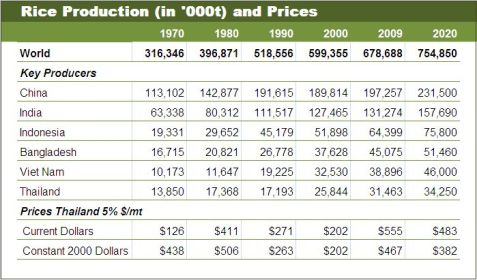As a cereal grain, rice is the most important staple food for a large part of the world’s population, especially in East and South Asia, the Middle East, Latin America, and the West Indies. It is the grain with the second-highest global production, after maize. Rice uses about 15% of the nutrients applied to agriculture. Very roughly, in the latest years, rice received some 15-16% of the nitrogen fertilizer applied to crops, 12-13% of the phosphate fertilizer, and 13-14% of potassium fertilizer.
In the last forty years rice production has more than doubled. In addition, a 2010 study found that, as a result of rising temperatures and decreasing solar radiation during the later years of the 20th century, the rice yield growth rate has decreased in many parts of Asia, compared to what would have been observed had the temperature and solar radiation trends not occurred. The yield growth rate had fallen 10-20% at some locations. The study was based on records from 227 farms in Thailand, Vietnam, India, China, Bangladesh and Pakistan.
